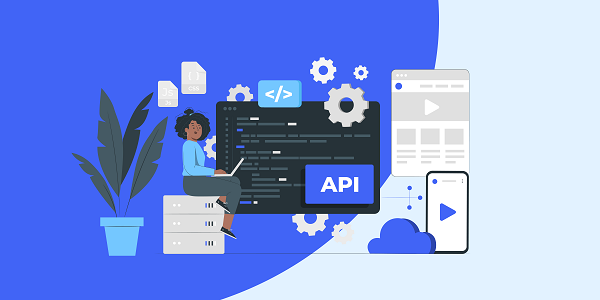Residential Proxies
Allowlisted 200M+ IPs from real ISP. Managed/obtained proxies via dashboard.

Proxies Services
Residential Proxies
Allowlisted 200M+ IPs from real ISP. Managed/obtained proxies via dashboard.
Residential (Socks5) Proxies
Over 200 million real IPs in 190+ locations,
Unlimited Residential Proxies
Unlimited use of IP and Traffic, AI Intelligent Rotating Residential Proxies
Static Residential proxies
Long-lasting dedicated proxy, non-rotating residential proxy
Dedicated Datacenter Proxies
Use stable, fast, and furious 700K+ datacenter IPs worldwide.
Mobile Proxies
Dive into a 10M+ ethically-sourced mobile lP pool with 160+ locations and 700+ ASNs.
Scrapers
Collection of public structured data from all websites
Proxies
Residential Proxies
Allowlisted 200M+ IPs from real ISP. Managed/obtained proxies via dashboard.
Starts from
$0.6/ GB
Residential (Socks5) Proxies
Over 200 million real IPs in 190+ locations,
Starts from
$0.03/ IP
Unlimited Residential Proxies
Unlimited use of IP and Traffic, AI Intelligent Rotating Residential Proxies
Starts from
$1816/ MONTH
Rotating ISP Proxies
ABCProxy's Rotating ISP Proxies guarantee long session time.
Starts from
$0.4/ GB
Static Residential proxies
Long-lasting dedicated proxy, non-rotating residential proxy
Starts from
$4.5/MONTH
Dedicated Datacenter Proxies
Use stable, fast, and furious 700K+ datacenter IPs worldwide.
Starts from
$4.5/MONTH
Mobile Proxies
Allowlisted 200M+ IPs from real ISP. Managed/obtained proxies via dashboard.
Starts from
$1.2/ GB
Scrapers
Web Unblocker
Simulate real user behavior to over-come anti-bot detection
Starts from
$1.2/GB
Serp API
Get real-time search engine data With SERP API
Starts from
$0.3/1K results
Video Downloader
Fully automated download of video and audio data.
Starts from
$0.07/GB
Scraping Browser
Scale scraping browsers with built-inunblocking and hosting
Starts from
$2.5/GB
Documentation
All features, parameters, and integration details, backed by code samples in every coding language.
TOOLS
Resources
Addons
ABCProxy Extension for Chrome
Free Chrome proxy manager extension that works with any proxy provider.
ABCProxy Extension for Firefox
Free Firefox proxy manager extension that works with any proxy provider.
Proxy Manager
Manage all proxies using APM interface
Proxy Checker
Free online proxy checker analyzing health, type, and country.
Proxies
AI Developmen
Acquire large-scale multimodal web data for machine learning
Sales & E-commerce
Collect pricing data on every product acrossthe web to get and maintain a competitive advantage
Threat Intelligence
Get real-time data and access multiple geo-locations around the world.
Copyright Infringement Monitoring
Find and gather all the evidence to stop copyright infringements.
Social Media for Marketing
Dominate your industry space on social media with smarter campaigns, anticipate the next big trends
Travel Fare Aggregation
Get real-time data and access multiple geo-locations around the world.
By Use Case
English
繁體中文
Русский
Indonesia
Português
Español
بالعربية


This article systematically analyzes the core functions and working principles of the proxy scanner, explains its technical value in proxy IP quality detection, anonymity verification and network performance optimization, and explores the collaborative application scenarios of abcproxy proxy service and scanning tools.
1. Definition and core goals of proxy scanner
A proxy scanner is a tool used to automatically detect the availability, performance, and anonymity level of proxy IPs. Its core tasks include:
Survival detection: Verify whether the proxy server is online and connectable;
Protocol support: test the proxy's compatibility with HTTP/HTTPS/SOCKS5 and other protocols;
Anonymity classification: Identify transparent proxy, anonymous proxy, and high-anonymity proxy (Elite Proxy);
Performance evaluation: Measure response latency, bandwidth throughput, and connection stability.
For example, the proxy IP pool provided by abcproxy can be used with a scanner to achieve real-time quality monitoring, ensuring that the service availability rate reaches more than 99.9%.
2. Principles of core technology implementation
2.1 Basic testing process
Handshake test: Verify the port open status through TCP three-way handshake;
Protocol simulation: Send a standard HTTP request header and analyze the returned Via, X-Forwarded-For and other fields to determine anonymity;
Targeted postback: Request a specific test page (such as http://httpbin.org/ip) and compare the returned IP with the original IP.
2.2 Performance Quantification Indicators
Response delay: Calculate the time from TCP handshake to the arrival of the first data packet. The optimization threshold of high-quality proxies is usually less than 500 milliseconds.
Bandwidth throughput: The transmission rate is calculated by downloading standard test files. High-speed proxy must reach more than 5MB/s.
Error rate: This is the percentage of connections that time out or are reset. The error rate of a high-quality proxy should be less than 1%.
3. Functional classification and typical tools
3.1 Classification by application scenario
Bulk scanners (such as ProxyScrape): quickly detect large lists of IPs and mark available proxies;
Deep Analyzer (such as ProxyCheck): Provides metadata analysis functions such as geographic location and ASN attribution;
Continuous monitoring system: integrated into the proxy pool management platform to automatically eliminate low-quality nodes.
3.2 Open Source Tool Features
ProxyBroker (Python): supports concurrent scanning and automatic protocol selection, but lacks deep anonymity detection;
Masscan (C): can handle high-speed scans of more than 100,000 IPs per second, but only supports basic port detection;
Scrapy Proxy (Go): Integrates with the crawler framework to achieve real-time updates of the proxy pool, but relies on external API interfaces.
4. Analysis of typical application scenarios
4.1 Commercial Data Collection
Anti-crawling: Screening high-anonymous proxies to circumvent the target website's IP blocking strategy;
Load balancing: Dynamically allocate proxy nodes based on latency test results to optimize crawler efficiency.
4.2 Network Security Penetration
Anonymous springboard verification: ensures that the source IP of penetration test traffic cannot be traced;
Vulnerability scanning protection: Distribute scanning requests through multiple proxy nodes to reduce the probability of alarm triggering.
4.3 Advertising effectiveness monitoring
Geolocation verification: confirm the country/city to which the proxy IP belongs, and accurately simulate regional advertising display;
CDN performance test: Measures the response speed of the content delivery network through globally distributed proxy nodes.
5. Collaborative optimization with proxy services
Quality pre-screening: import the original IP list of abcproxy into the scanner to automatically remove inefficient nodes;
Dynamic routing: Routes high-value requests (such as payment interface testing) to high-quality proxies based on real-time scanning results;
Cost control: Count IP utilization and optimize the purchasing mix of proxy packages (such as mixed use of residential and data center proxies).
For example, abcproxy's API supports dynamically returning proxy IPs based on parameters such as latency and geographic location, and can be directly connected to scanners to build an intelligent scheduling system.
As a professional proxy IP service provider, abcproxy provides a variety of high-quality proxy IP products, including residential proxy, data center proxy, static ISP proxy, Socks5 proxy, unlimited residential proxy, suitable for a variety of application scenarios. Its proxy IP has passed strict built-in scanner detection to ensure high anonymity and stability. If you need reliable proxy resources and technical support, please visit the abcproxy official website to obtain customized solutions.
Featured Posts
Popular Products
Residential Proxies
Allowlisted 200M+ IPs from real ISP. Managed/obtained proxies via dashboard.
Residential (Socks5) Proxies
Over 200 million real IPs in 190+ locations,
Unlimited Residential Proxies
Use stable, fast, and furious 700K+ datacenter IPs worldwide.
Rotating ISP Proxies
ABCProxy's Rotating ISP Proxies guarantee long session time.
Residential (Socks5) Proxies
Long-lasting dedicated proxy, non-rotating residential proxy
Dedicated Datacenter Proxies
Use stable, fast, and furious 700K+ datacenter IPs worldwide.
Web Unblocker
View content as a real user with the help of ABC proxy's dynamic fingerprinting technology.
Related articles

Why do you need a dedicated proxy IP to buy shoes on SNKRS
This article analyzes the core role of dedicated proxy IP in SNKRS snap-ups, explores how to improve the success rate through proxy IP technology, and introduces how abcproxy provides professional solutions for sneaker enthusiasts.

How to search for Taobao products through pictures
This article analyzes the implementation logic of Taobao's image search technology, explores practical methods to improve search efficiency, and explains the application value of proxy IP services in e-commerce data collection, and recommends abcproxy professional proxy solutions.